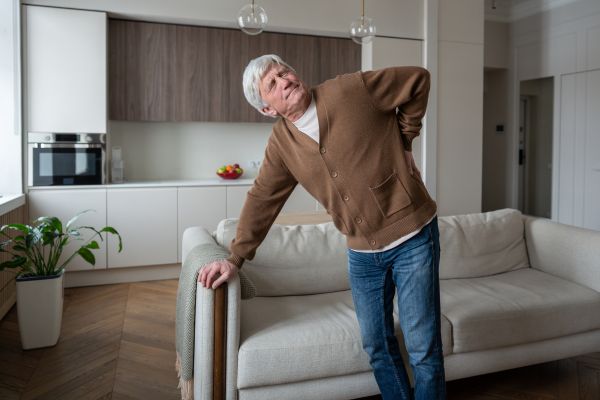Let’s be real — aging isn’t always easy. The gray hairs and wisdom are great, but the aches that come along? Not so much. One of the most common and frustrating issues people face as they age is arthritis. It sneaks in quietly, stiffens your joints, and suddenly even simple things like getting out of bed or opening a jar become a challenge. But here’s the thing — arthritis doesn’t have to take over your life. With the right approach, arthritis management in elderly individuals can make all the difference between painful days and an active, comfortable lifestyle.
Understanding Arthritis in the Elderly
Before diving into management tips, it’s good to understand what’s really going on. Arthritis isn’t just one condition — it’s a broad term that covers over a hundred types of joint disorders. The most common types among older adults are osteoarthritis and rheumatoid arthritis.
Osteoarthritis is that “wear and tear” kind — years of movement slowly break down the cartilage that cushions your joints. Rheumatoid arthritis, on the other hand, is an autoimmune condition where your body mistakenly attacks its own joint tissues. Either way, the result is the same: stiffness, swelling, pain, and limited movement.
And you know what’s tricky? These symptoms often develop gradually, making it easy for people to brush them off as “just getting old.” But catching arthritis early can dramatically change how manageable it becomes later on.
Why Arthritis Management in Elderly Matters So Much
Arthritis isn’t just about pain. It affects independence, mobility, and overall quality of life. For many seniors, untreated or poorly managed arthritis can lead to a downward spiral — less movement means weaker muscles, which leads to more pain and less balance, which then increases the risk of falls. It’s like a vicious circle.
That’s why proper arthritis management in elderly populations is crucial. It’s not just about reducing pain; it’s about keeping people active, independent, and mentally strong. When you move better, you feel better — and that impacts everything from mood to heart health.
Getting the Right Diagnosis
Here’s the thing: not all joint pain is arthritis. Sometimes it’s muscle strain, or even nerve-related pain. That’s why it’s essential to get a proper diagnosis. A doctor might order X-rays, blood tests, or physical exams to figure out exactly what’s happening in those joints.
Once you know the type of arthritis, you can create a tailored management plan. And this plan is where the real difference begins.
The Core of Arthritis Management in Elderly: Movement
It sounds counterintuitive, right? When you’re in pain, the last thing you want to do is move. But gentle, consistent movement is actually one of the best remedies for arthritis. The key is to move wisely.
Low-impact exercises like swimming, walking, and stretching can help keep joints flexible and muscles strong without putting too much strain on them. Yoga and tai chi are also incredible options — not only do they improve flexibility, but they also help with balance and relaxation.
If mobility is limited, even simple chair exercises or slow range-of-motion movements can help. The point isn’t to push hard but to stay consistent. A few minutes a day can go a long way.
The Role of Diet and Weight Management
You’ve probably heard the saying, “You are what you eat.” When it comes to arthritis management in elderly folks, that’s absolutely true. Inflammation plays a big role in arthritis pain, and diet can either help calm it down or make it worse.
Foods rich in omega-3 fatty acids, like salmon and flaxseeds, can reduce inflammation. Colorful fruits and veggies — think berries, leafy greens, and bell peppers — are packed with antioxidants that protect joints. On the flip side, cutting down on processed foods, sugars, and red meats can help reduce flare-ups.
And let’s not ignore weight. Every extra pound puts added pressure on your knees and hips. Even a small amount of weight loss can make a noticeable difference in pain levels and mobility. It’s not about being skinny; it’s about easing the load on your joints.
Pain Relief Options That Actually Work
When it comes to managing pain, there’s no one-size-fits-all answer. Some people find relief through over-the-counter medications like acetaminophen or NSAIDs (non-steroidal anti-inflammatory drugs). Others may need prescribed medications or injections.
But medication isn’t the only path. Heat and cold therapy can work wonders — a warm compress can loosen stiff joints, while a cold pack can reduce swelling. Some people even swear by topical gels that provide quick, targeted relief.
Physical therapy is another game-changer. A trained therapist can teach safe movements, stretches, and techniques that make daily life easier. And for those who like to explore natural options, supplements like turmeric or glucosamine (after checking with a doctor, of course) might offer some relief.
Mental and Emotional Health: The Overlooked Piece
Here’s something not everyone talks about: arthritis doesn’t just affect your body. Chronic pain can take a real toll on your mind. Depression and anxiety are surprisingly common among older adults dealing with arthritis.
That’s why emotional wellness should always be part of arthritis management in elderly care. Staying socially connected, joining support groups, or even having regular chats with family and friends can make a big difference. Mindfulness, meditation, or simply engaging in hobbies also help redirect focus from pain to something positive.
You know how people say “laughter is the best medicine”? When it comes to arthritis, it might not cure the pain, but it definitely helps lighten the load.
Home Adjustments That Make Life Easier
Sometimes, small changes at home can have a big impact. Installing grab bars in bathrooms, using ergonomic kitchen tools, or adding railings along stairs can make daily life safer and more comfortable. Good lighting, supportive chairs, and non-slip rugs might not seem like big deals, but they all add up to more independence and less risk of injury.
And don’t underestimate assistive devices. A cane or walker isn’t a sign of weakness — it’s a smart move to stay mobile and prevent falls. Think of them as tools that empower rather than limit.
The Power of Routine and Patience
Managing arthritis is a long game. There’s no quick fix or overnight miracle, and that’s okay. The key is to stay patient and consistent. A good routine that includes gentle movement, healthy eating, medication (if prescribed), and regular checkups can keep symptoms in check and improve overall well-being.
It’s also important to listen to your body. Some days will feel better than others, and pushing through pain often does more harm than good. Finding the right balance between activity and rest is the sweet spot.
Final Thoughts on Arthritis Management in Elderly
Arthritis might be common in older adults, but it doesn’t have to define aging. The truth is, with the right mix of exercise, nutrition, medical support, and self-care, it’s entirely possible to live fully and joyfully — even with achy joints.
Arthritis management in elderly individuals isn’t about chasing perfection. It’s about finding what works for you — the little habits that make mornings easier, the foods that make you feel better, and the routines that bring you comfort. So yes, arthritis may slow you down a bit, but it doesn’t get to stop you. Keep moving, stay positive, and remember — every small step counts.



